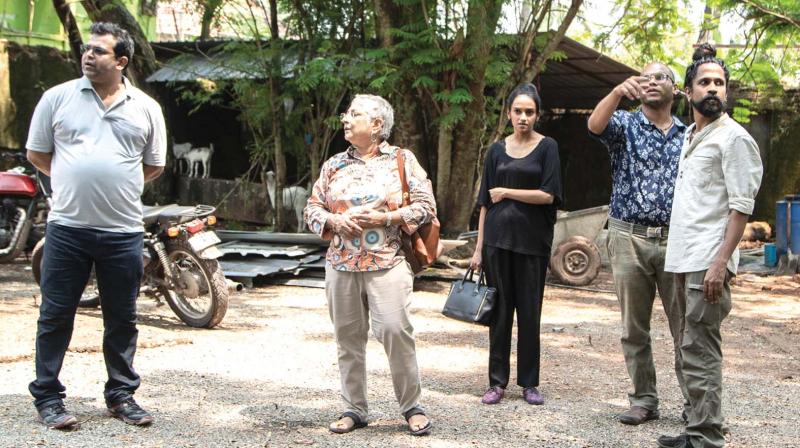Joy of making a biennale: A peek at backroom operations

Kochi: The Kochi-Muziris Biennale, the biggest contemporary art festival in Asia, being held at Fort Kochi-Mattancherry from December 12, 2018 to March 29, 2019, is a testimony to the dedicated work done by curator Anita Dube along with two curatorial assistants and others from the production wing for several months. The 90-odd installations tell the story of the expertise, logistics, foresight and planning required to assemble them, what with a sizeable number of works coming in from other countries and continents.
Eminent artist Anita Dube, 60, received hands-on support from her assistants Anushka Rajendran and John Xaviers. The duo began their assignment in May last year from Dube's studio in the national capital, and got crucial back-up from the rest of the members in the production team.
Anushka and John used to work at her studio with big layouts of each venue. "The chief drill was to plan which artist will be slotted where - going by her curatorial note," rewinds Anushka, completing her PhD in visual studies at the School of Arts and Aesthetics of Delhi's Jawaharlal Nehru University (JNU).
Even to Fort Kochi's Aspinwall House, the biggest venue of the festival, it was only by late September 2018 the team got access.
"There will be these last-minute shuffling, alterations…" points out John, who holds a doctorate from JNU in cultural politics. "In fact, we did go for many changes once we got access to the venues. After all, things depend a lot on infrastructural requirements."
For instance, the original idea was to place all the big art installations in TKM Warehouse at Mattancherry, another heritage town adjacent to Fort Kochi. "On visiting the site, we understood the practical difficulties," reveals John. "Soon we chose to move the works to other venues."
South African Sue Williamson's work has turned out to be a big hit among the visitors at Aspinwall. "The work ('One Hundred and Nineteen Deeds of Sale') required over 2,000 identical bottles with a specific style of engraving. We were told of it in advance, so it all went off well," says Anushka.
Similarly, Australian artist Brook Andrew had recreated one of his earlier works, this time taking references from Kerala and its history. "Initially, we were planning to showcase one of his large-scale installations. But the space allotted was insufficient, so he suggested recreating the work," says Anushka.
Pavneet Pal Singh, coordinator - exhibition design & production, states South African William Kentridge's video work required a space which was like a black room. But the space allotted to him has natural light seeping in from the roof in different angle.
"We were a little apprehensive in the beginning because covering the roof would have meant the budget going haywire. But, it worked in our advantage because Kentridge's production team loved the locale, stating the natural light was acting as an element for the work."
Installing EB Itso's work featuring a huge rubber tyre was also a challenge, notes Pavneet. "Anita wanted the work to be installed in a closed space. Initially, we were planning to install it in Anand Warehouse. But the weight of the tyre was posing a problem," he explains. "We thought of cutting it into two and reinstalling it at the site. Even that didn't become feasible. Finally, we chose to create a temporary enclosure at Aspinwall."
The monsoon catastrophe had a telling effect on the biennale ideas of some installations. For, a few artists chose to change their work in a way that lent focus on the biggest Kerala calamity in a century.
Jith Joseph A, Operations Assistant, who worked closely with Bangladeshi artist Marzia Farhana's work, states it was "therapeutic" for him, having affected by the flood.
Production manager Anil Xavier and coordinator Jayesh L R say it gives them great satisfaction when the common people come and enjoy the works installed by them. "We are happy to reach out to our audiences," says Anil. Adds Jayesh: "It touches their life in a broader spectrum."

